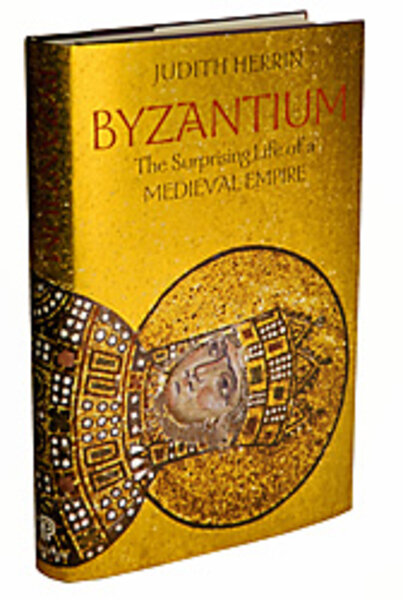Byzantium surprise
It is spoken of in fiction and histories as an enigma, a shrouded maze of privileged deception and perfumed deceit, an ossified, jewel-encrusted court, where guile and honeyed treachery reign – a medieval Middle Eastern version of the Versailles of Louis XV. It is Byzantium. But that image, as cinematically enticing as it may be, is one of the most effective examples of disinformation the world has ever seen, as Judith Herrin reveals in her remarkable new history, Byzantium: The Surprising Life of a Medieval Empire.
By the 3rd century AD, the Roman Empire had grown so large and its distant borders so besieged, that it was decided that at least two and possibly even four emperors should cogovern. The plan was not a success. The emperors fought one another for domination. Meanwhile, the western half continued to buckle under the constant pressure of tribal onslaughts. Then in AD 324, Emperor Constantine moved his capital from Rome to build a fortified classical city, a "new" Rome, in Constantinople (modern Istanbul). Though it was frequently threatened and over time its land base diminished, still this devoutly Christian Byzantine Empire flourished for nearly another thousand years.
Yet rather than offering us another dry linear history about dynastic power struggles, Herrin takes a fresh approach and focuses on manifold aspects of Byzantine culture, civilization, and religion.
From Constantine's conversion, Herrin details the transformation of Christianity from persecuted sect to state religion. She provides a fascinating overview of early Christian asceticism and the organization and development of the first monasteries, while paying special attention to those around Jerusalem, Christianity's holiest city. Later, she demonstrates the Byzantine openness of thought as in the 9th century when they encouraged the creation of an alphabet for the Slavic language which would enable them to communicate with the unruly and ungovernable Slavs. The emperor then supported the translation of the Bible into this newly invented Cyrillic language so that the Slavs could read the Bible in their own tongue and be converted. Subsequently, the Bible was translated into Russian, and the Russian peoples similarly converted. (The translation of the Bible into the vernacular remained controversial and heretical within Western Christianity until well past the 15th century.) Herrin also provides an unbiased look at the uneasy relationship between the Western Church based in Rome and what became the Eastern Orthodox church.
The professor of Byzantine History at King's College, London, Herrin's scholarship is impeccable, yet she writes like the very best of travel writers. She paints vivid pictures of this prosperous and pious culture whose capital was a fortified city of sunlight glinting off the gilded church domes and spires, surrounded on three sides by the shimmering Sea of Marmara and the Bosphorus.
From the first page, the author embraces the reader in the love of her subject. She entertains and captivates while throwing open the doors to her formidable treasury of knowledge with examples of artistry, intellect, and innovation: the legal separation of church and state, the first encyclopedia, a water-powered organ, the building of the colonies of Venice and Ravenna, relations with far-flung Scandinavia and Iceland, and the introduction of the fork to European dining.
Herrin shows that far from being ossified, the Byzantines were a highly educated society whose ancient and Christian heritages combined to give them enormous strength and resilience. So technologically advanced were they that scientists are still unable to penetrate the mystery of "Greek fire," their water-borne incendiary. Moreover, the governmental and economic structures were so sound that their gold standard was maintained without debasement for nearly 900 years.
Yet in 1204, in a sustained bout of frenzied savagery, the warring knights of the Fourth Crusade sacked Byzantium. They desecrated churches, burned the contents of centuries-old libraries, robbed and pillaged, destroyed and slaughtered, leaving "the greatest city in Christendom ... full smouldering ruins." To justify this barbaric treatment of their coreligionists and allies, to prove that the Byzantines had "deserved" it, the myth of the treacherous, deceitful Byzantine was invented.
Wonderfully, now, at last, in "Byzantium: The Surprising Life of a Medieval Empire," Herrin brings us the thrilling and powerful rebuttal, and beautifully redresses the imbalance.
• M.M. Bennetts is a freelance writer in Hampshire, England.





